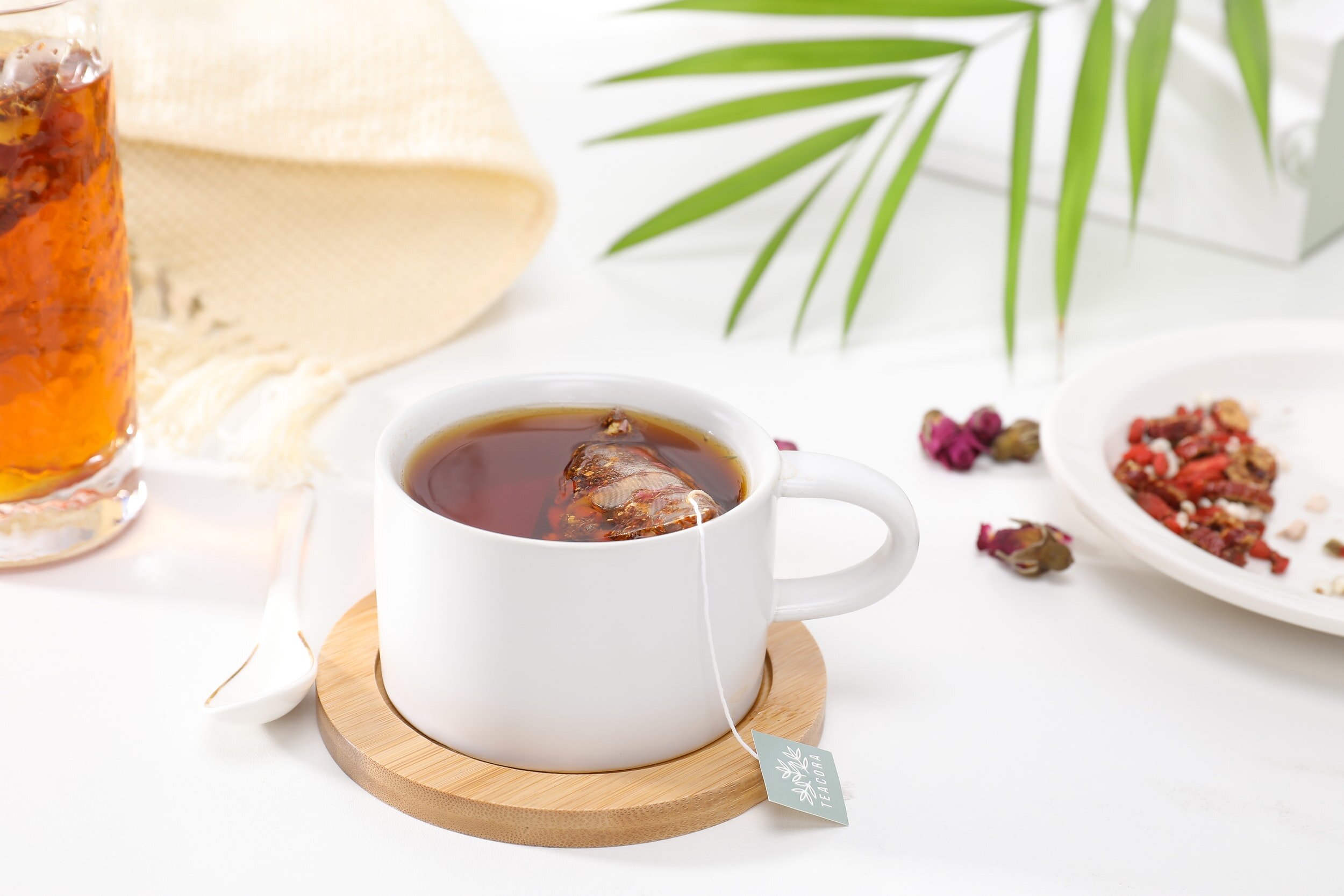Herbs and Teas for Autumn
🍃
“Tea is a miraculous medicine for the maintenance of health. Tea has an extraordinary power to prolong life. Anywhere a person cultivates tea, long life will follow”
- How to stay by drinking tea, Zen monk Eisai 1211
🍃
“ Tea drinking is best suited to a veranda or a quiet room; near a bright window with a table of gnarled wood; in a monk’s hut or a Daoist hall; under moonlight silhouetted by bamboo thickets with wind blowing through pine trees; while sitting at a banquet and reciting poetry; while discussing matters and reading scrolls.” - Lu Shu Sheng
There are many simple herbal teas that promote wellness this season. Since Autumn is one peak time for seasonal allergies, one strategy to employ is choosing herbal tea is to use simple single herbs to clear wind and heat from the head.
Two examples of this are chrysanthemum (ju hua 菊花) and mint (bo he 薄荷).
To make these teas, take about a teaspoon of either of these two herbs in their dry form (or use both!) and add to one cup of boiling hot water. Let steep and sip throughout the day. If dryness symptoms are present, such as dry eyes or nose, or slight constipation, honey can be added to the taste. For patients with chronic dry eyes that worsen in the Autumn, make a tea by combining one teaspoon of chrysanthemum flowers with one teaspoon of Chinese wolfberries (i.e., Goji berries; gou qi zi 枸杞子).
During cold and flu season many simple teas can be taken to help prevent contracting the condition or to treat it in early stages. For basic prevention make a simple tea combining six grams each of schizonepeta buds (jing jie 荊芥) and perilla leaf (zi su ye 紫蘇葉). Steep them both in 8 to 10 ounces of boiling hot water and sip throughout the day. These two herbs can also be combined with regular Chinese green tea.
For early stage colds that are characterized by chills, runny nose, slight headache, and maybe even nausea or lack or appetite, make a simple tea by boiling about six slices of peeled ginger root in one cup of water. For added strength, cook the ginger with several pieces of the white parts of a scallion bulb.
Because the basic flavor associated with the Metal phase and Autumn is sour, a delicious daily tea to make is simply steeping one or two slices of fresh lemon in boiling hot water. A second sour flavored beverage for the season is rose hip tea. Rose hips are the fruit of the rose plant and an excellent source of vitamin C. Not only is vitamin C an important nutrient, research suggests it can also be effective in preventing and treating the common cold.




